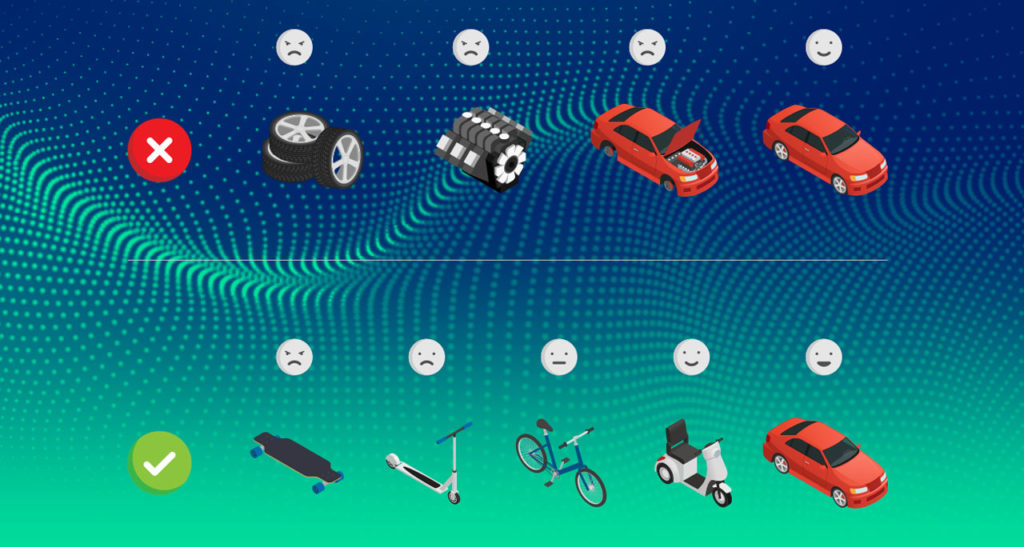Contxto – “Most Valuable Player” is not far off. For your startup to have a chance at success you will have to create a Minimum Viable Product that will act as the star player in your market’s playing field.
We’ve partnered with the professional MVP consultants and developers at Rionic to create this quick and easy guide to the best practices of MVP creation in 5 steps.
Why the MVP is the gold standard
First, why do people care so much about this term?
An MVP is proof of concept. It is an efficient test to see what kind of product best fits the market niche or vertical you are hoping to tackle.
Take a baker. There may be a clear demand for bread in her village, but if her bread is bad, no one will buy it.
Conversely, if she’s making an amazing, but expensive, rye sourdough, only a few of the rich, hipster types will be interested in what she’s got to offer. She still wouldn’t be covering the main market need and probably won’t be able to make ends meet.
Therefore, for a baker, the best place to start—her MVP—is a standard white loaf. Sure, it can be tasty, but it needs to be quick, easy, and cheap to make and accessible to all.
What is an MVP?
There is a certain beauty to the madness of creating an MVP. Instead of getting bogged down in little details, a Minimum Viable Product forces you to simultaneously tackle every facet of launching the simplest possible product to the market (hence the name).
Torn down to its bare bones your MVP must cover all each one of the vowels. It must be:
- Accessible
- Effective
- Intuitive
- Optimized
- Useful
To launch something viable, your product can’t afford to have just one or even four of these elements. It must be all of them. Usually, it is up to you to get your balancing act just right, however, there are professionals to help you get on the path to MVP success.

How to create an MVP
Let’s reach for our handy mnemonic device. An MVP’s AEIOU:
1. Accessible
Customers need to be able to get to your MVP. Sounds obvious, but not so fast. Accessibility takes on many forms. It could involve issues of distribution, consistency, functionality, even aesthetics.
For instance, in the realm of app development, consistency in distribution is crucial. You may launch an app as your MVP and on iPhones it works great. But, it turns out that your target market tends to use another operating system and your app there sucks—or doesn’t even exist.
This actually happened in a literal life or death situation after the Mexican government launched a Covid-19 tracing app, that initially wasn’t available for iOS.
This meant that, even if the app was good, for weeks it couldn’t be used by 15 percent of the smartphone owning population. (The globetrotting portion of the country most likely to have initially contracted the virus.)
The development team at Rionic are the sort of specialists that foresee these common software pitfalls. They’ve got tricks like “write once, use twice” approach for app development, where they design an app to contain the same traits and functionality on different operating systems.
So, remember, if you’re making people work to get to your product, they simply will not bother. Make it easy to get their hands on your MVP.
2. Effective
Time is of the essence. One of the reasons MVPs need to be bare-bones solutions is that, as soon as you seriously start the business of launching a product, you’ll most likely start creating overheads. Once you’ve got overheads, no matter how small, you’ve suddenly got a runway.
You need to give yourself time to fail and learn as you create and fix your MVP. Things need to happen quickly. Forget vanity metrics and glorious visions of what your product could someday become. In the here and now, you must—if not cut corners—optimize your existing resources.
For instance, in a burst of effectiveness, last-mile delivery Glovo in its early days came up with a naughty but nice solution to its shortcomings.
çInstead of painstakingly getting companies to register to his platform. The company just took photos of the restaurants, uploaded their preexisting menus, and when an order came in, the startup just ordered the grub itself.
At first, it was incumbent upon Glovo to quickly prove that there was a desire for its services. But, eventually, restaurants would sign up themselves upon seeing a service that people were asking for take out on the app.
3. Intuitive
Do you know why social media sites no longer just launch new page designs like they used to? Because, everybody hated it when they did that. Some people even spelt the death of Instagram because it changed its look that one time.
Nowadays, when Facebook or Twitter launch new interfaces, the process involves prior steps, like beta testing, pre-visualization, and evolving mockups. Indeed, often a company’s employees are in too deep to know if their product is intuitive or not.
However, as a startup, you don’t have the time or the resources to do all this.
How then do you carry out all this market testing in order to keep a product broadly appealing? You just need to get out there, test your product, measure its outcomes, and, well, screw up a bit.
That is why simplicity is key when launching an MVP. Overcomplicated products are not only tough for customers to use, they use up more resources than they’re worth in creating.
Indeed, the “minimum” in MVP is often not a limitation but a great asset.
4. Optimized
How low can you go? It might be easy to make a simplified product by taking away all the bells and whistles. But, to make “minimum viable product” is to make the most simple product a person will buy. This is the real challenge.
It’s not that you’re trying to cheat your users. Rather, you are trying to optimize your use of supply and demand.
Spend too little on one facet of your product and no one will think it worth buying. It won’t be viable.
Spend too much on another facet and you’ll be wasting resources (time, money, usually both) on an aspect of your product that will doubtlessly evolve… Or worse, you’ll be assigning the label “minimum viable” to what should eventually become one of the “premium features” that you’d be charging customers more for.
Remember, you’re checking for a market fit. At the end of the day, an MVP is the most efficient way to learn about what customers want from you. Just enough is more than enough.
5. Useful
In the end, the most attractive product to a customer is one that they need. If you build it and you’re not getting customers—even if your solution is attractive, accessible, and well distributed—, then you do not have an MVP.
The issue is you’ll have to launch the product to truly gage if anyone but you finds it useful. You can tweak a product to death to get it “just right” before launching. But, in the end there’s no better teacher than the market.
Think of a company like Gympass. It started its life selling individual gym subscriptions to people—a cumbersome and unwieldy customer base.
However, the product quickly got interest from companies that wanted Gympass’ service for their employees. So, the startup pivoted and recreated its most basic product to go from B2C to B2B.
The market told the company which way to go. Gympass never would have known the best course to take had they not gone out there and proved their usefulness on the ground.
Launching an MVP is the best way to find out if your product is useful. You’re beta testing usefulness with the best test group: The market.
MVP is your trusty steed in the startup Wild West
There’s a reason the stereotype for capitalists revolves around the image of the ruthless, cut-throat entrepreneur.
You have to get out there and make projects a reality. Only then will you come to realize the problems, pitfalls, and pain points that you never even imagined when you were plotting out your plan.
However, often to launch a product means to start the clock on a limited runway that you can’t afford to dither on. You need to become effective. You need to become that rugged, Wild West entrepreneur.
Luckily, you needn’t get your hands dirty all on your own. The need for speed when creating MVPs has actually created a fruitful market for companies looking to help startups speed this crucial process in their development.
Our good friends at Rionic can lend a hand when it comes to coding. Indeed, Rionic is a workshop specialized in developing MVPs and initial stage platforms for startups. They focus on MVP consulting and MVP development.
If you’re interested in their MVP consulting, their MVP development or just want to learn more about how to best create your own MVP, drop them a line.
So, if you’re just a guy or a gal with the simple ambition of revolutionizing the world with your solution. Well, there’s no clearer cut path than the one with a prime MVP under your arm.
-AG







